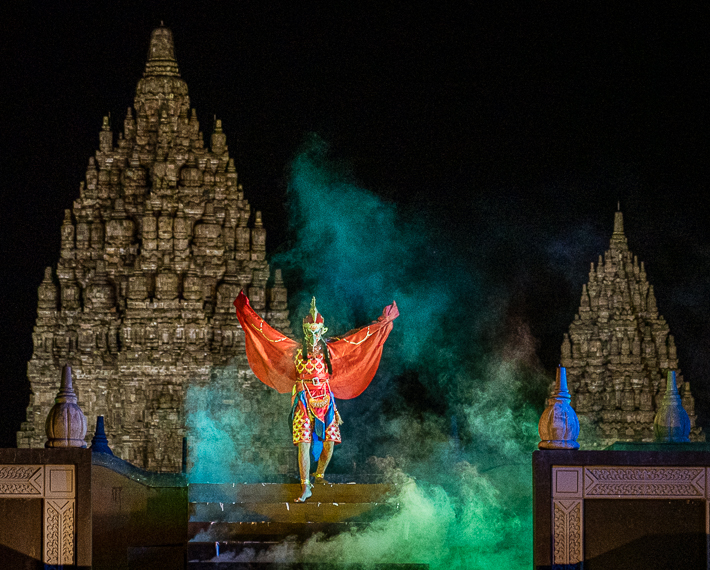
We frequently appreciate seeing the cultural activities of the countries we visit. While in Java, Indonesia, we attended the masterful Ramayana Ballet in Yogyarkarta, which is considered a highly stylized dance form. This Javanese ballet combines music, dance and drama, and is performed outdoors with the base of the ancient Prambanan Temple as the back drop.
When you watch this performance, you can see the differences in the hand positions and gestures between Javanese and Balinese dance styles. This ballet was performed with a level of professionalism that would make any theater in the world proud.
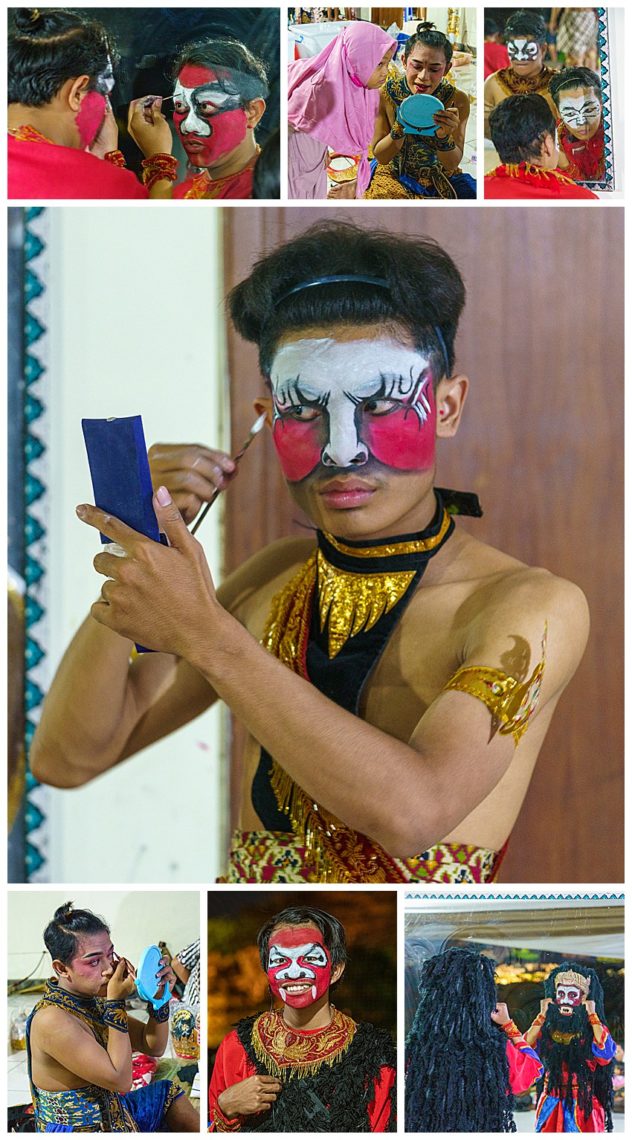
David Metcalfe, our photo tour guide, arranged for us to visit backstage while the dancers were preparing for their performance. Though we have seen backstage setups before, this was easily the largest, with more than 100 dancers, all perfecting their personal appearances before going on stage.
Initially, we photographed the male performers apply their makeup and costumes. Many of them did so while lined up in front of long mirrors with many others also preparing next to them (upper-left and upper-right). Many used small cosmetic mirrors (bottom-left), though a few actually used mobile phone selfie cameras (center).
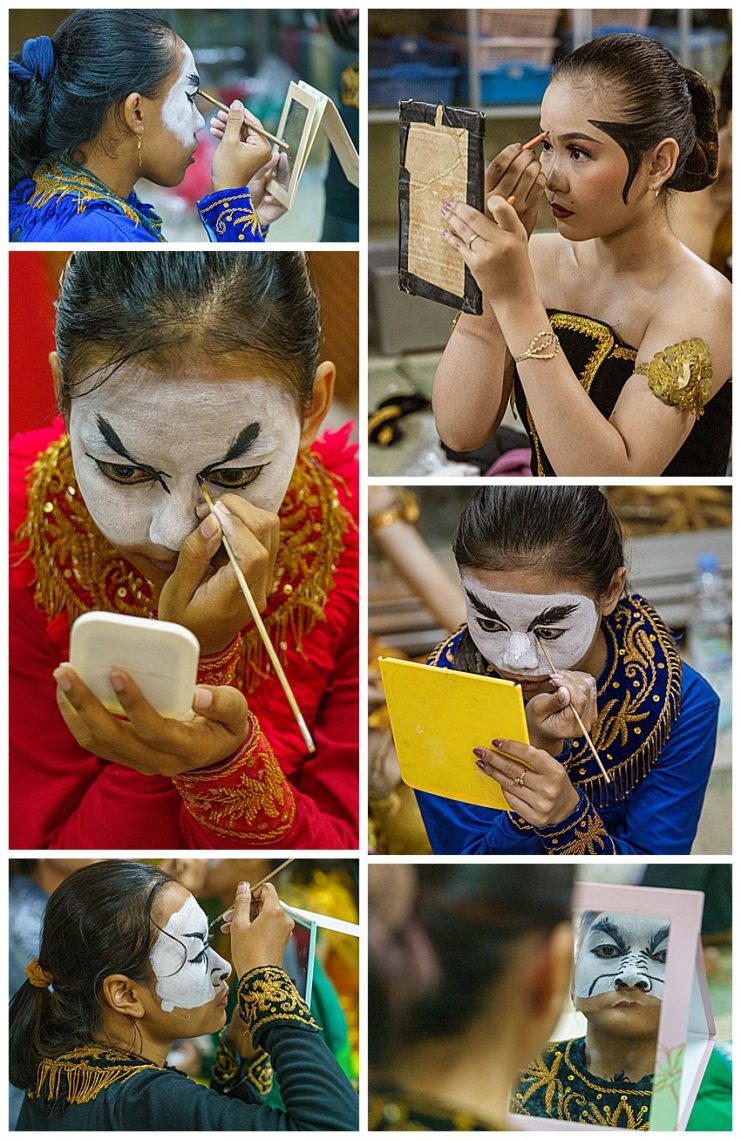
Once the female performers were in costume, we were invited to enter their dressing room, and watch them apply their final stage paint. Each woman used a personal small mirror to apply her own face paint to perfection, making sure that even the smallest lines were complete, even if the audience would be too far away to actually see such details.
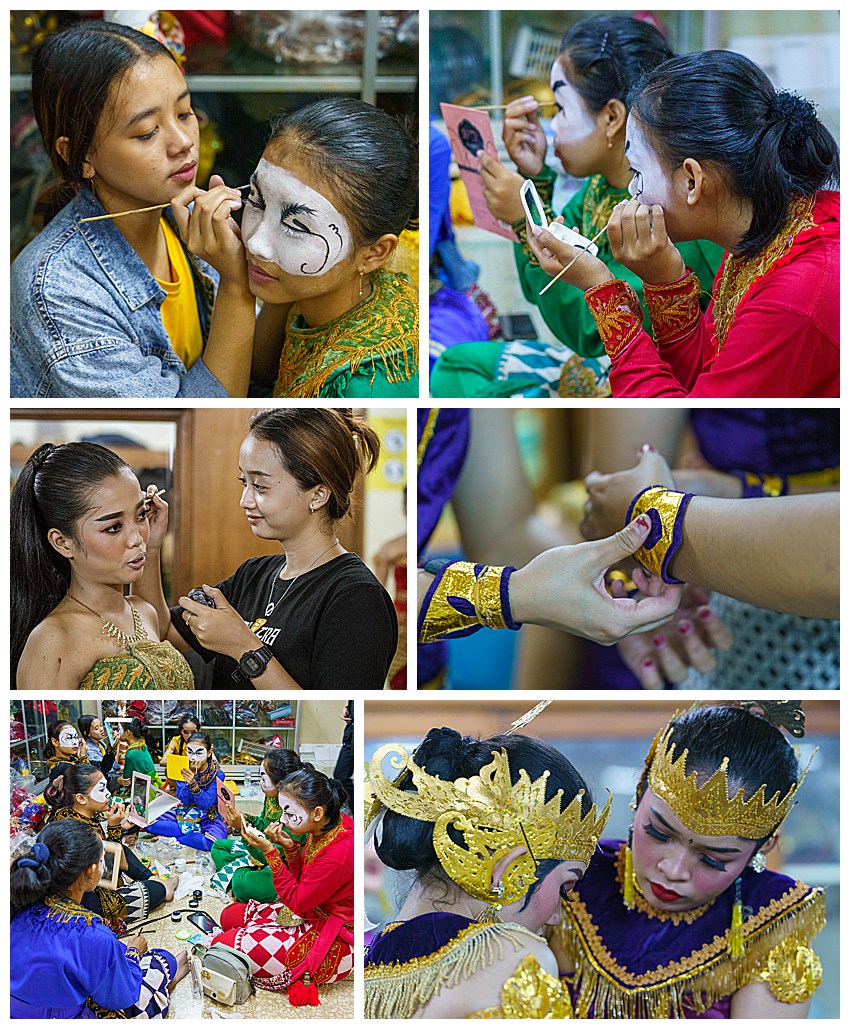
While most women worked on perfecting their own make up (upper-right and lower-left), many others worked in pairs, helping each other with costume details.
Before moving on to the performance itself, an important point should be made — all of these performers are university students. None are professional, though you would never have guessed it watching them prepare — or later perform.
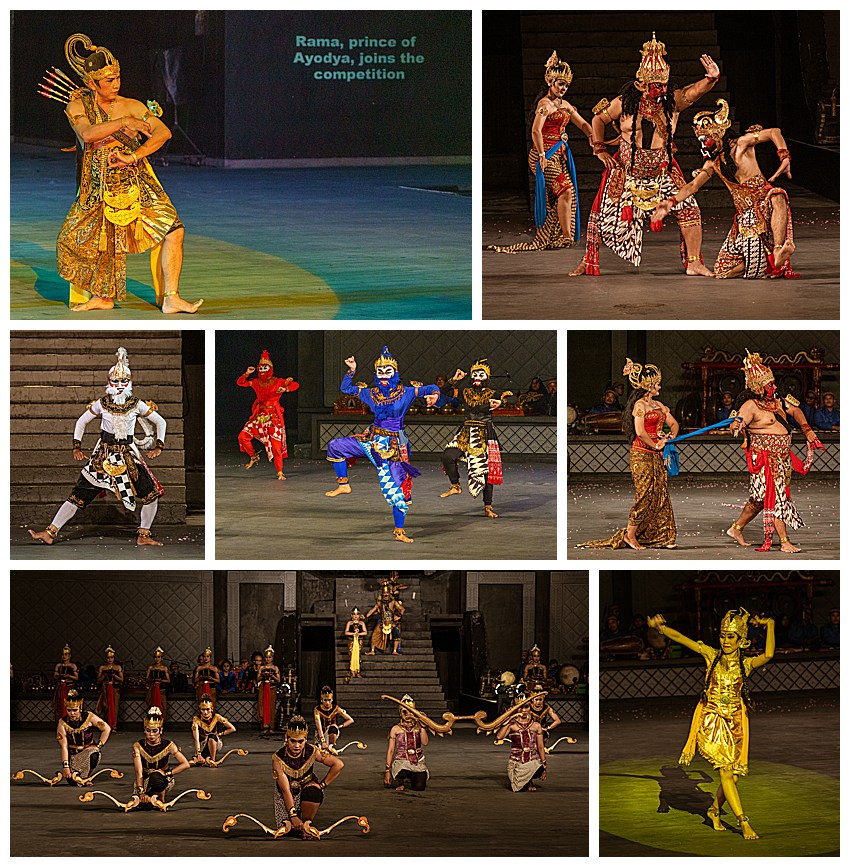
All ballets are complex, and very difficult to follow if you do not know the story ahead of time. One aspect of this performance that I particularly liked was that the story line was projected onto a screen during the ballet (upper-left). It was first shown in Indonesian, and then in English. There was no obvious stage event that indicated to look to that screen, so I missed a few of the queues. However, once I began to understand the flow of the story, I knew when to check for an explanation of what was going on.
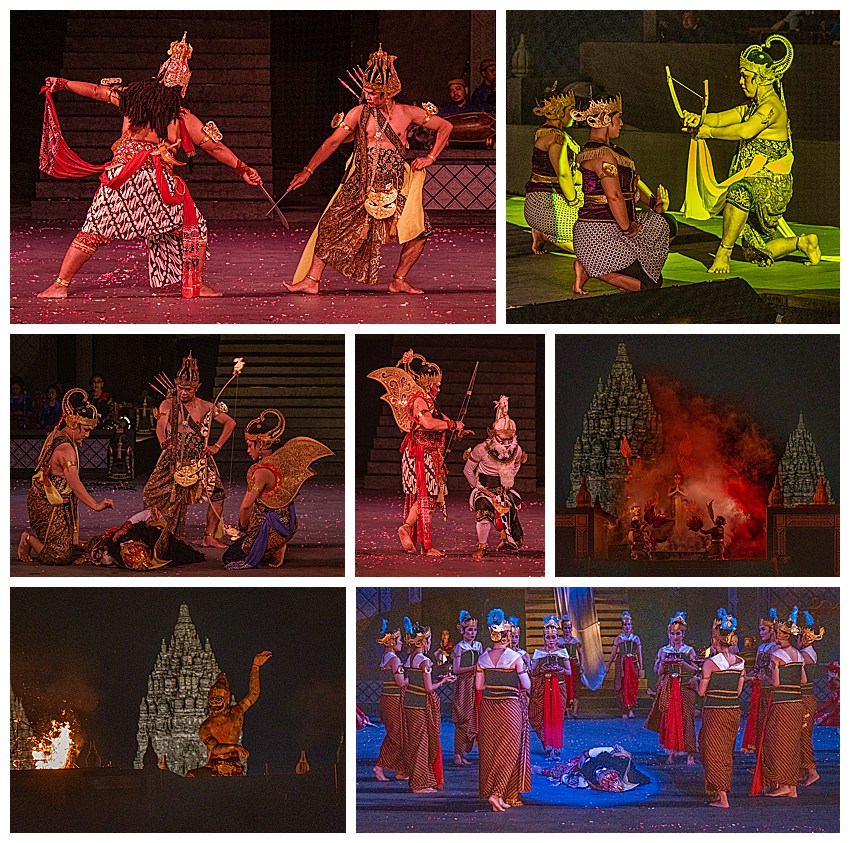
I will not attempt to detail the entire story line here. If you are interested, a good place to start is with this Wikipedia entry, which will lead you to further entries on each phase of the ballet.
In brief though, the ballet is a legendary epic love story about the triumph of good over evil. The story is about Prince Rama and his loyal wife Sita. She is desired by Rahwana, the giant demon. Through pretext, the demon manages to abduct her and carries her to his place at Alengka. The rest of the ballet is basically about the Prince searching for his wife with the help of his brother and the monkey king to get his wife back. Then Prince Rama attempts to kill the demon, the demon escapes death and then burns down the village. At the end, Rama and Sita are back together.
Yeah, a rather quick recap of a complex 90 min ballet, but I leave it to those interested to discover the details through the link above… ☺
The Grand Finale deserves to be seen, and is thus presented here for you. Everything in this ballet happens in slow motion though. To keep your attention, it is sped up to twice the normal pace, reducing it to 75 seconds. This is the portion where the gods try to kill the demon with fire. He escapes (you see him jumping through the fire twice). The demon then burns down the village (fireworks included), as a huge demon statue rises above the stage.
